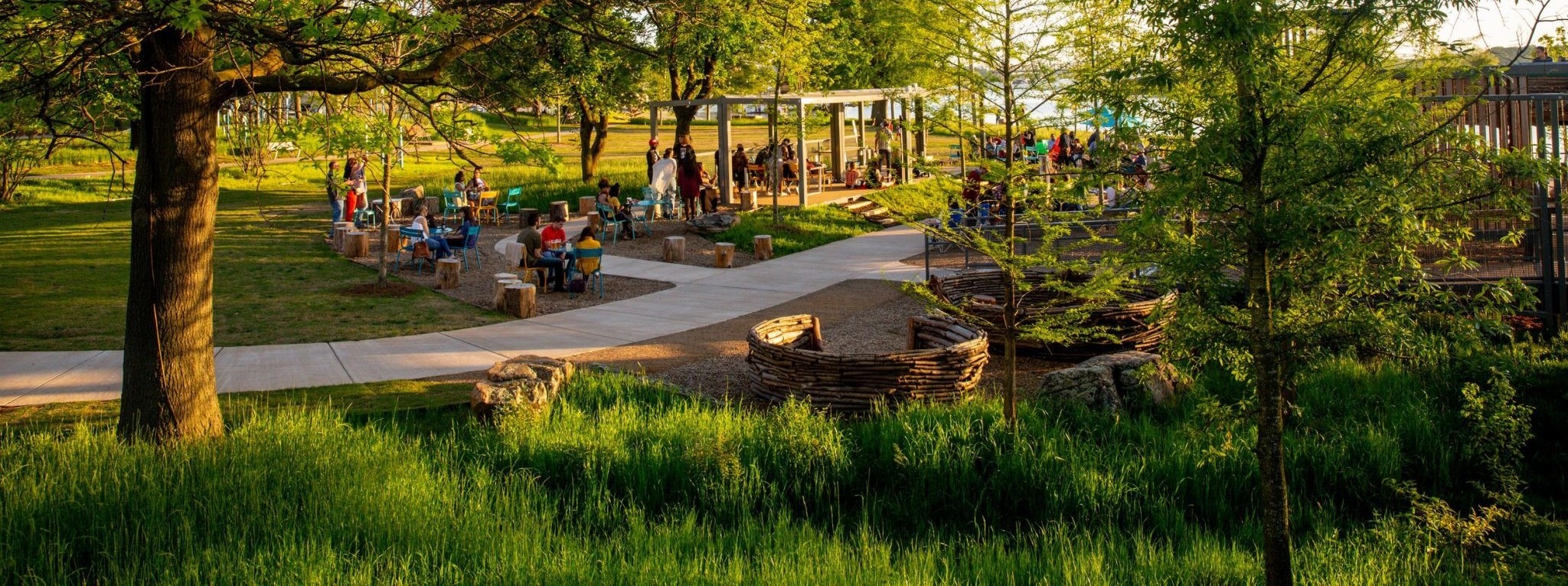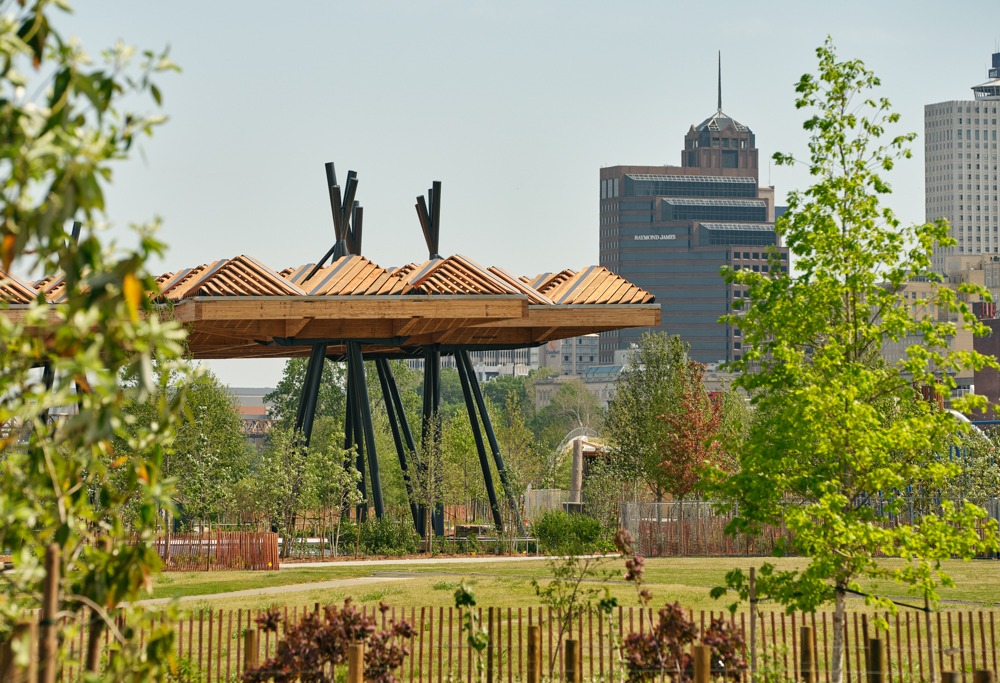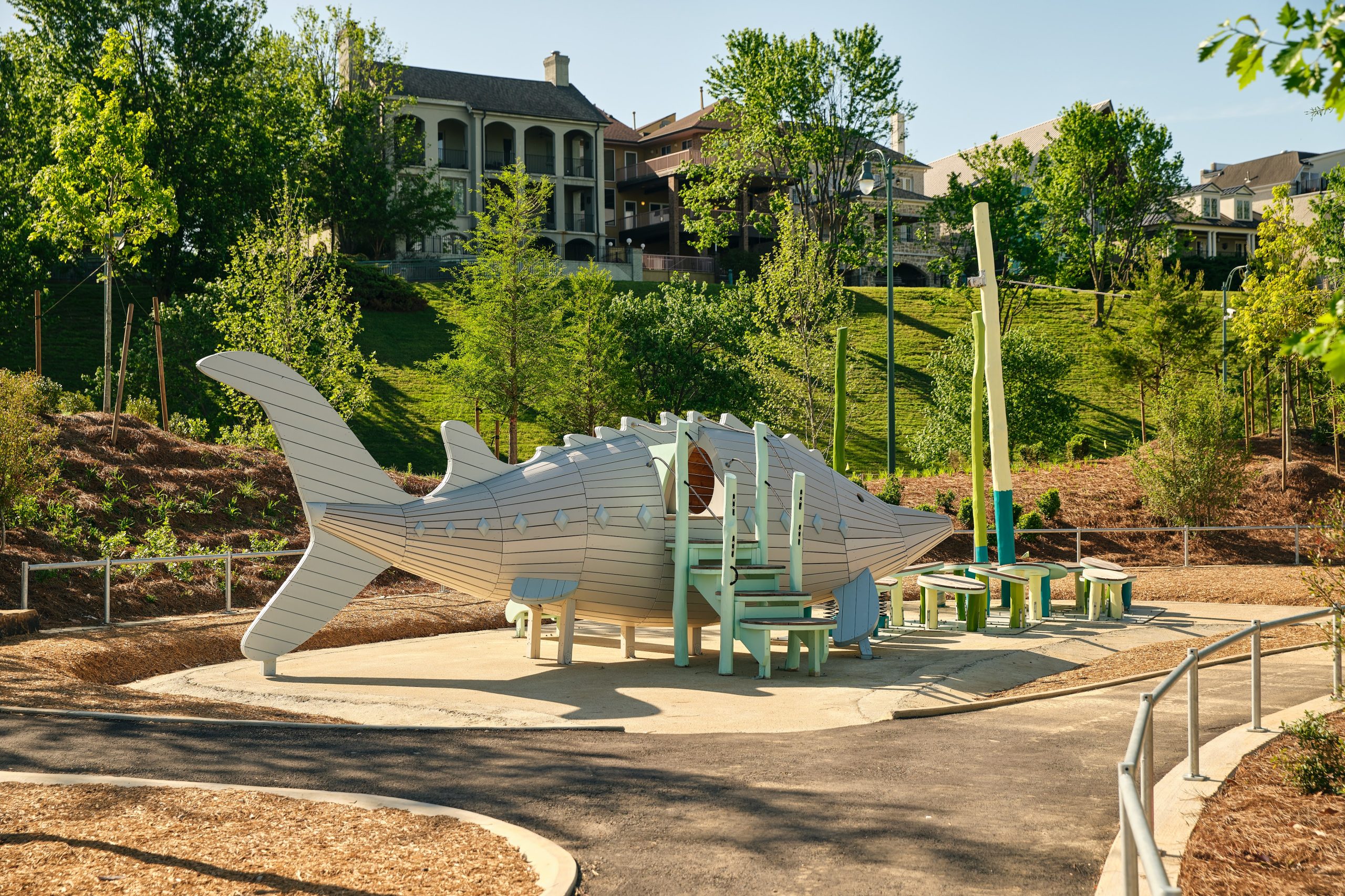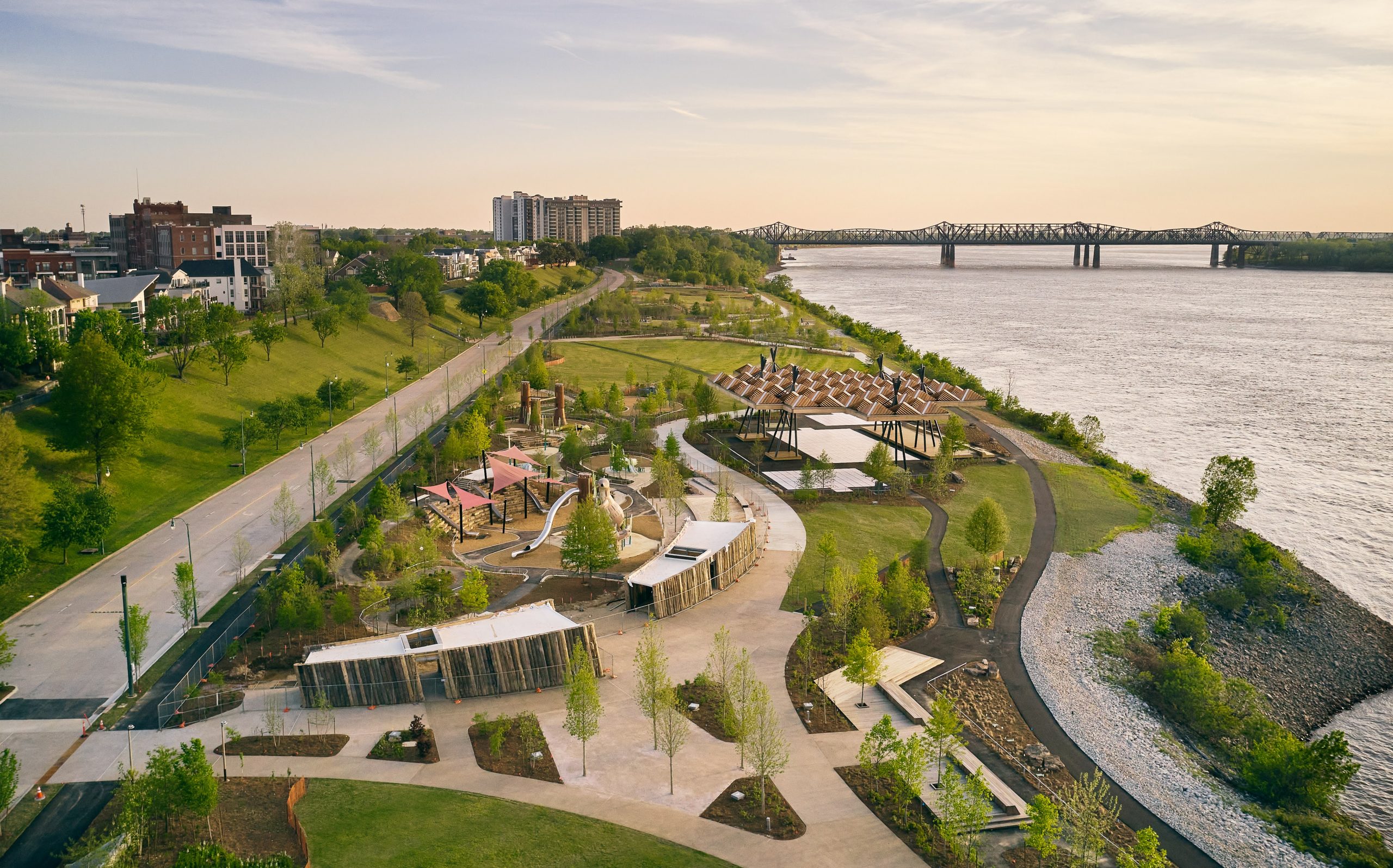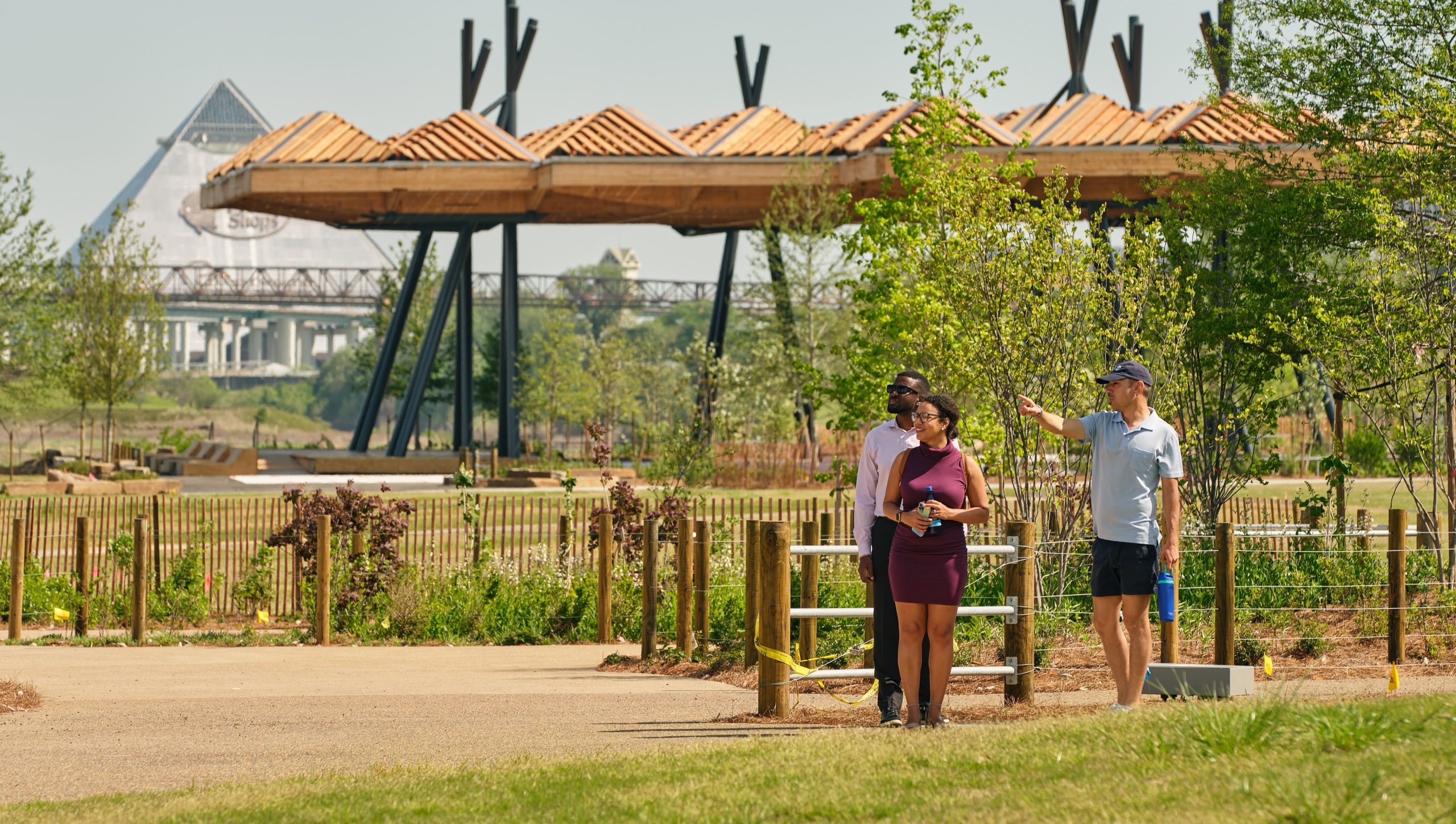On Labor Day weekend in early September, the City of Memphis will celebrate a major collaboration by Jeanne Gang of Studio Gang and Kate Orff of SCAPE Landscape Architecture.
It’s 31 acres – starting at the foot of Beale Street and running south along the edge of the Mississippi River – and it’s called Tom Lee Park.
For good reason.
In 1925, Tom Lee was a local hero and a national celebrity – an unlikely status for an African American roundabout employed by a company engaged in levee repair.
But when the M. E. Norman, a ship owned by the U.S. Army Corps of Engineers, flipped over on May 8 1925, most of its 72 passengers were tossed into the river.
And Tom Lee sprang into action
He didn’t know how to swim, but he did know how to maneuver his wooden skiff, the Zev, through the cold and fast-moving waters of the Mississippi. Lee began plucking as many passengers as he could out of the river – taking eight at a time in the Zev to a nearby sandbar.
He would save 32 from drowning, including the Norman’s captain – and then gathered driftwood for a fire to warm them. He returned to the site of the overturned vessel and continued to look for survivors through the night. In all, 23 passengers and crew members died; 12 made it to shore without Lee’s help, according to a 2014 Memphis Magazine article.
Suddenly, Lee was everyone’s champion. He met with the mayor, and was photographed by the local papers. The African Methodist Church passed a resolution: “We hail you as the patron knight of this new age of chivalry and heroism, and extol your manly virtue as worthy of the best heart of your proud but humble race. Shine on, Tom Lee, shine on!”
He eventually made his way to Washington, D.C. to be celebrated by President Coolidge. The local Engineers Club took up a collection and bought him a modest brick home. He was awarded a job with the sanitation department, where he worked for 20 years.
He died in 1952. In 1954, Astor Park at the base of Beale Street was rededicated as Tom Lee Park. In 1991, the Army Corps of Engineers enlarged it to its current 31 acres – stretching from Beale Street for a mile on the riverfront.
Ironically, at about the same time the original Tom Lee Park was established, two Confederate-themed parks were created nearby. This, in a city with a population that’s 65 percent African American – and one that today boasts the nation’s largest Black population.
While Studio Gang and SCAPE were reimagining Tom Lee Park for all the citizens of Memphis, those other two parks were being remade and renamed. The former Jeff Davis Park, its statuary removed, has become River Gardens. And the old Confederate Park is now known as Fourth Bluff Park.
Today, the Memphis River Parks Partnership is striving to manage and develop all five miles of riverfront parks on the Mississippi shoreline in Memphis – and using its award-winning architects and landscape architects in thoughtful, meaningful ways.
“We want to evoke a set of behaviors from people who come to the park, and call forth a set of values of care, respect, welcoming and belonging,” says Carol Coletta, president and CEO of the partnership. “And we want to build on the legacy of Tom Lee, because his is a fascinating story.”
Tomorrow: How master planner and architect Studio Gang and landscape architect and park designer SCAPE reimagined 31 acres of downtown Memphis riverfront.
For more, go here.

